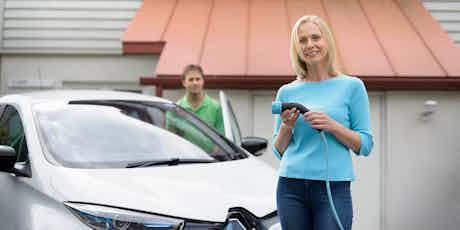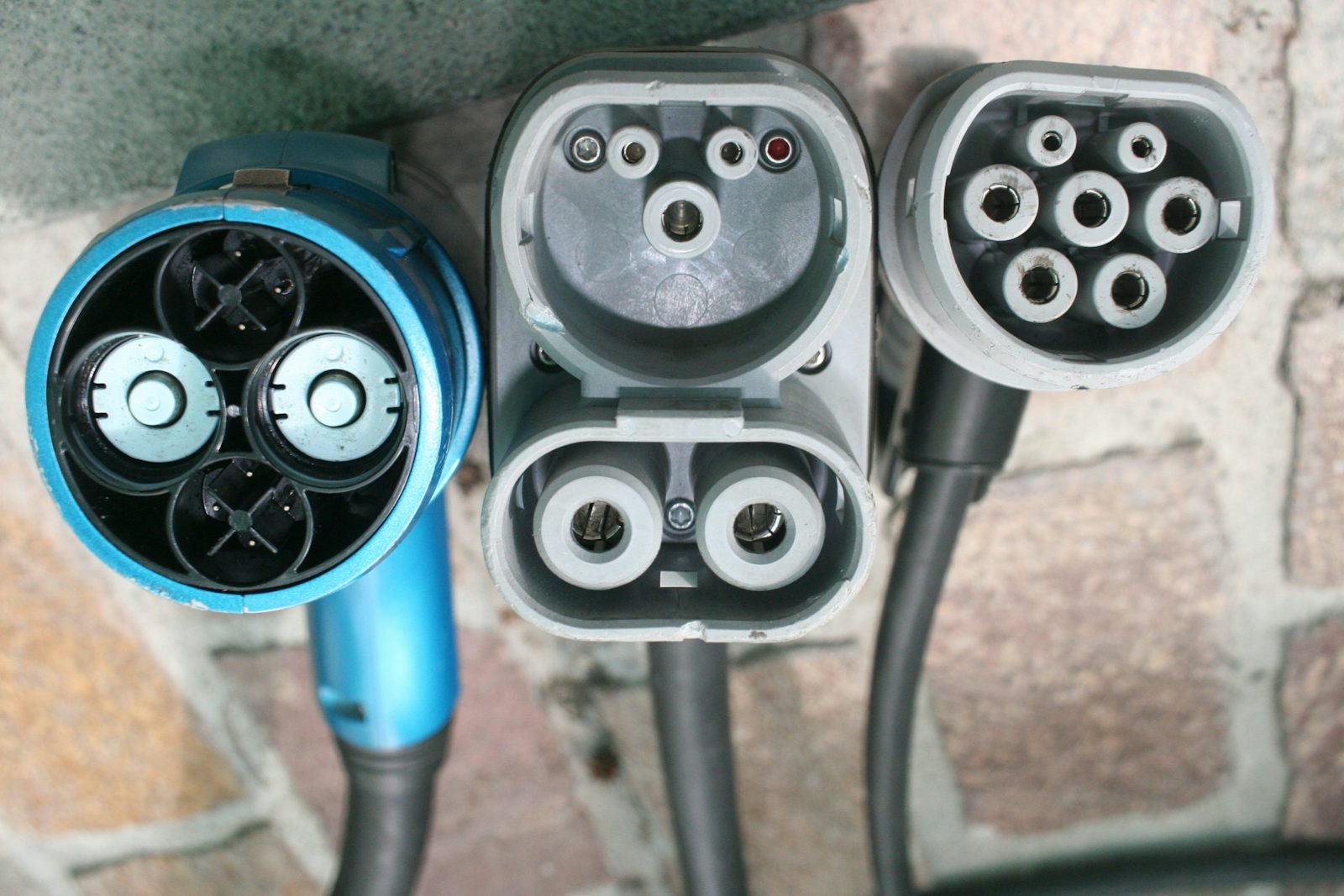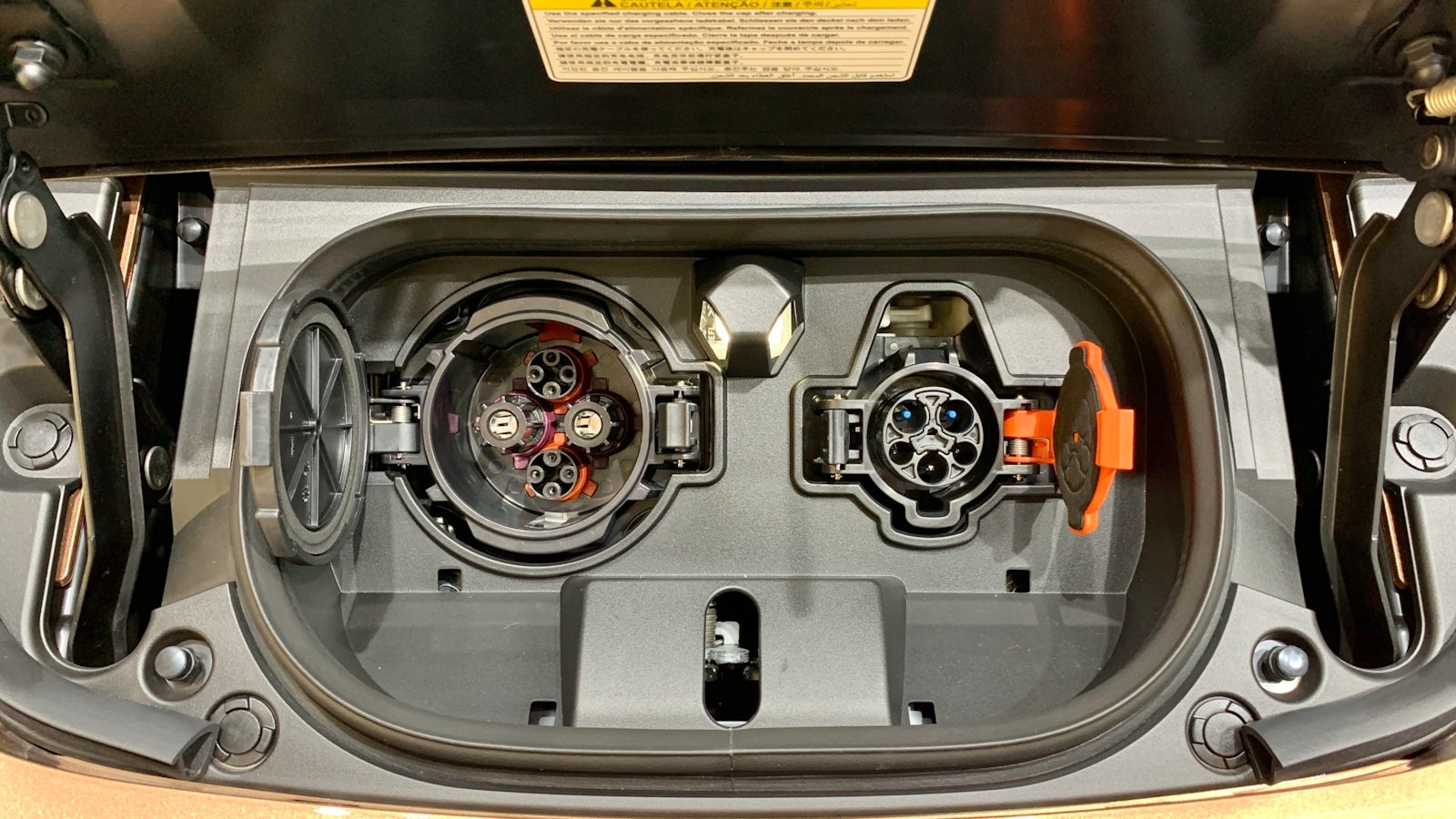Electric car connector types
November 02, 2022 by carwow staff

Although electric car chargers have almost become standardised, there remain some differences between EV plugs; we explain all
When electric cars first stared to appear on the motoring landscape, there was a fair amount of uncertainty about what sorts of plug connectors different cars would accept, and which they wouldn’t.
But as time has passed and electric cars become more and more mainstream, a fair degree of uniformity has emerged, with almost all new electric cars accepting Type 2 plugs for slower chargepoints, and CCS connectors for faster ones.
That’s not to say there aren’t things worth knowing, though, with some legacy charging sockets like CHAdeMO still worth knowing about, particularly if you’re considering a second-hand electric car. Our guide explains all.
A note on charging speeds
Before we begin to look at different EV charger plugs it’s worth a quick detour via EV charging speeds.
Electric cars can charge at different speeds. A ‘slow’ charge is would be delivered from a standard three-pin plug, but this is really slow – 2.3 kiloWatts (kW) or so – at that speed it would take almost two days to charge an EV with a big 100kWh battery (100 divided by 2.3 = 43.48 hours). And you don’t want to be doing this from a safety perspective, as EV charging places big demands on standard plug sockets.
Next comes ‘fast’ charging, which is generally considered to be 7-22kW. You should expect around 7kW if you have a dedicated home EV wallbox charger installed, and this rate would recharge a 100kWh EV in roughly 14 hours.
The you have ‘rapid’ charging. This is anything above 50kW, with rapid chargers only being found at public locations – you can’t get this sort of speed at home. This would take two hours to charge a 100kW EV from full to empty.
Some rapid chargers can charge at 100, 150kW or even 350kW, though not all EVs can accept such fast charging. Chargers that can deliver more than 100kW are sometimes known as ultra-rapid.

Type 2 plugs
Every EV sold today comes with a Type 2 connector socket. Type 2 EV charging plugs deliver electricity via alternating current (AC), and can generally charge at no faster than 22kW.
CCS plugs
Almost every EV sold today also comes with a CCS plug. Short for Combined Charging System, a CCS plug utilises the same socket as the Type 2 plug, but features an additional two prongs that allow direct current (DC) to be delivered to the car. This allows for much faster charging than can be provided by an AC Type 2 socket. Rapid and ultra-rapid charging is facilitated by CCS plugs.

CHAdeMO plugs
CHAdeMO plugs are the Betamax (and old, ultimately also-ran video-cassette format) of the EV charging world. While once it was a toss-up whether CCS or CHAdeMo would be the plug of choice, now it is clear that CHAdeMo is no longer really in the running. If you’re interested, CHAdeMO is short for ‘CHArge de MOve’, hence the unusual selection of upper-case letters.
Details aside, CHAdeMO plugs are used for rapid DC charging. They don’t make use of the same Type 2 hole that CCS does, so a car that uses CHAdeMO must have two separate sockets – one for CHAdeMO rapid charging, and one for slower (annoyingly known as ‘fast’) charging.
The Nissan Leaf and the Mitsubishi Outlander PHEV are effectively the only modern cars that use CHAdeMO – though Nissan changed over to CCS when it launched the Ariya EV.

Tesla Supercharger plugs
Although a pilot scheme opening it up to owners of other EVs is ongoing, Tesla’s Supercharger network is proprietary, and in most cases only works with Tesla cars.

Nonetheless, its connectors are based on Type 2 and CCS charging plugs, with older examples of the Model S and X using Type 2, while the Model 3, Y, and newer examples of the Model S and X use the CCS socket. Interestingly, while with all other cars Type 2 plugs can only deliver AC charging, with earlier Model S and X cars the Type 2 plug can receive rapid DC charging when using a Tesla Supercharger. Adaptors are available so Teslas with only Type 2 plugs can use public, rapid CCS sockets.
Type 1 plugs
It would arguably be logical to include Type 1 plugs ahead of Type 2, but Type 1 is only used in North America where it can stand in as an alternative to Type 2.
You can see an example of a Type 1 socket on the image of the Nissan Leaf’s charging ports below, to the right of its CHAdeMO connector.

What about the different EV charging cables?
If you’re still with us, it’s worth talking about tethered and untethered cables as well.
Tethered cables
A tethered cable is one that is hardwired to an EV charging point. All public, rapid chargers are tethered, while public fast chargers, and home wallboxes, can be tethered or untethered.
Untethered cables
An untethered cable means a charger has a socket into which a charging cable can be plugged in.
Find out more:
Electric car charging guide
How much does it cost to charge an electric car?
Find your nearest electric car charging point in the UK
Cars Change? Carwow!
Looking for a new set of wheels? With Carwow you can sell your car quickly and for a fair price – as well as find great offers on your next one. Whether you’re looking to buy a car brand new, are after something used or you want to explore car leasing options, Carwow is your one stop shop for new car deals.















